Plant growth requires nutrients, which can be found in either naturally or chemically derived fertilizers. Composts, manures, granular amendments, and liquid amendments are available. We often apply them to a plant’s root system or as a foliar spray. However, a stroll through the fertilizer aisle can be very confusing for a new gardener, evoking memories of chemistry class. Fertilizer containers list the ratio of the three macronutrients nitrogen (N), phosphorus (P), and potassium (K) in bold type. These numbers show how much N, P, and K are in the fertilizer blend in percentages.
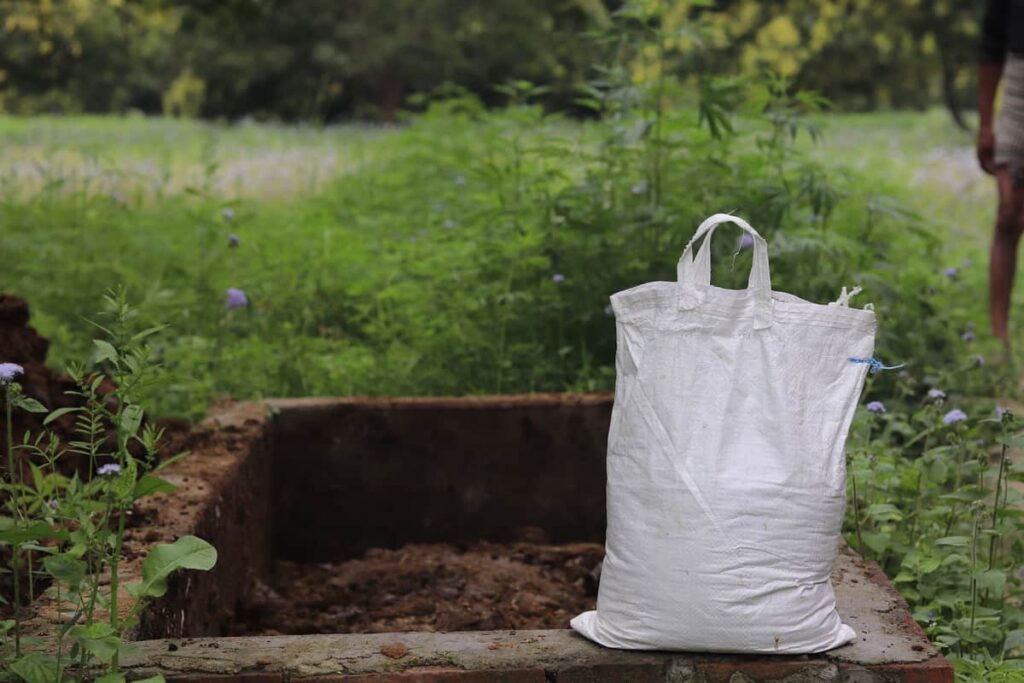
Fertilizer schedule for home garden
Organic fertilizers
Fertilizers from organic sources include plants, vegetables, animal matter, and excreta. Organic fertilizers have complex biological structures, one of their main advantages. It takes time and soil organisms’ help to break down into simpler nutrient molecules. Since the process is slow, the full and timely consumption of nutrients by plants is ensured, unlike chemical fertilizers.
Chemical fertilizers are more expensive than organic fertilizers. However, it is possible to prepare them locally on the farm. Since they are made from locally sourced materials, they are always more readily available. As well as environmental aspects, they are better at it. Renewable ingredients are used in their manufacture, so they will always be available.
Compost
Organic materials such as leaves, vegetable scraps, and other organic kitchen scraps are decomposed. Garden soil can be mixed with it to add nutrients to promote healthy plant growth. Compost can be applied in solid or liquid forms, known as compost tea. Whether you make compost or purchase it, avoid toxic chemicals in the compost that can destroy your garden.
In case you missed it: Fertilizer Schedule for Fruits: Organic, Chemical, How and When to Apply
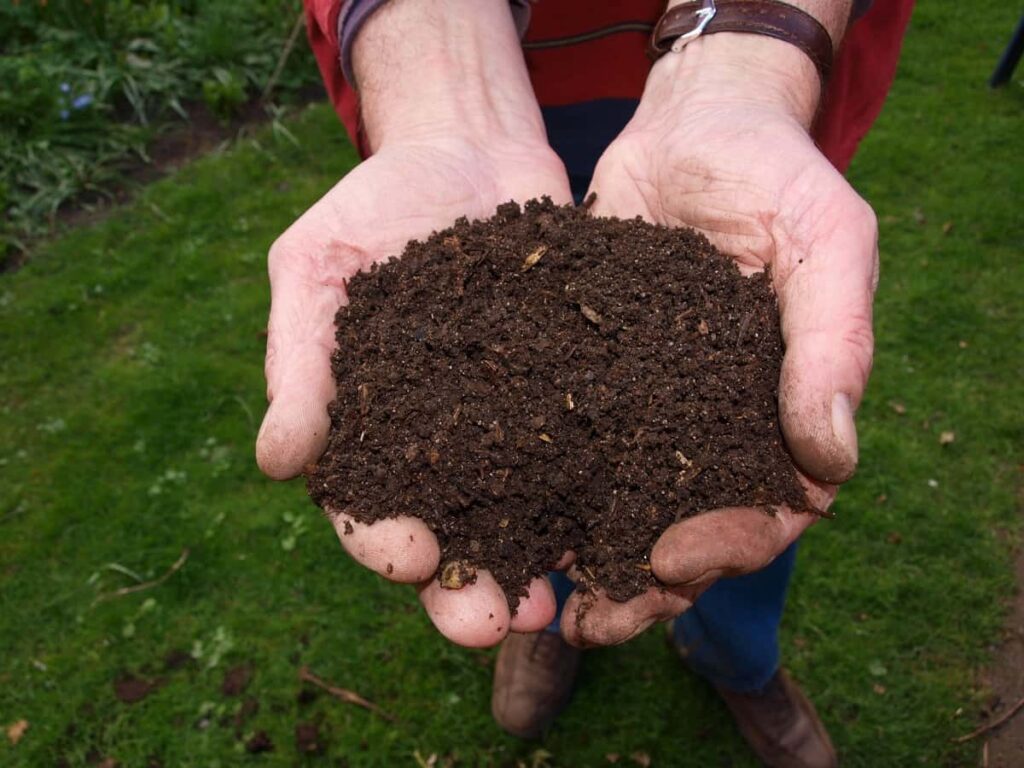
Applying method
- Mushroom compost and worm castings can be made at home or purchased commercially. Plants are more resilient to pests and diseases when they are fed compost.
- Apply a 1-2 inch layer around the base of established plants each spring, or work into the soil at planting time.
- You can also steep it in water and make tea from it. However, it may be necessary to supplement compost with nitrogen if it is not completely broken down.
Manure
A soil-like substance is formed from the decay of animal waste from herbivores. The best way to use manure in your garden is to mix it well into the soil where you will plant it. The best way to use manure is composted or aged, as fresh manure can be too hot for plants and may burn them. Manure should be added in the fall and allowed to sit all winter if you use fresh manure. You shouldn’t apply fresh manure to growing plants because it will burn their roots.
- Chicken Manure: One of the hottest options is chicken manure, which has the highest nitrogen content. Be sure to compost it and let it age well before applying it.
- Horse Manure: Easy to find, but may contain the most weed seeds (although if the compost pile reaches a high enough temperature, this can reduce the weed seeds). We can use a lot of composted horse manure in our garden, and They poop a lot
- Cow Manure: Low nitrogen content makes this a great all-purpose manure that won’t burn plants as easily. Horse manure generally contains fewer weed seeds than horse manure.
- Goat/Sheep Manure: The product is drier, less smelly, and gentle to plants (won’t burn). In addition, the pellets make it easy to apply.
- Rabbit Manure: Due to its “cold” nature, you can add it directly to plants without worrying about burning them. Take a handful of the “pellets” and sprinkle them around! Their gradual disintegration will release nutrients into the soil as they break down over time.
In case you missed it: Fertilizer Schedule for Vegetables: Organic, Chemical, How and When to Apply
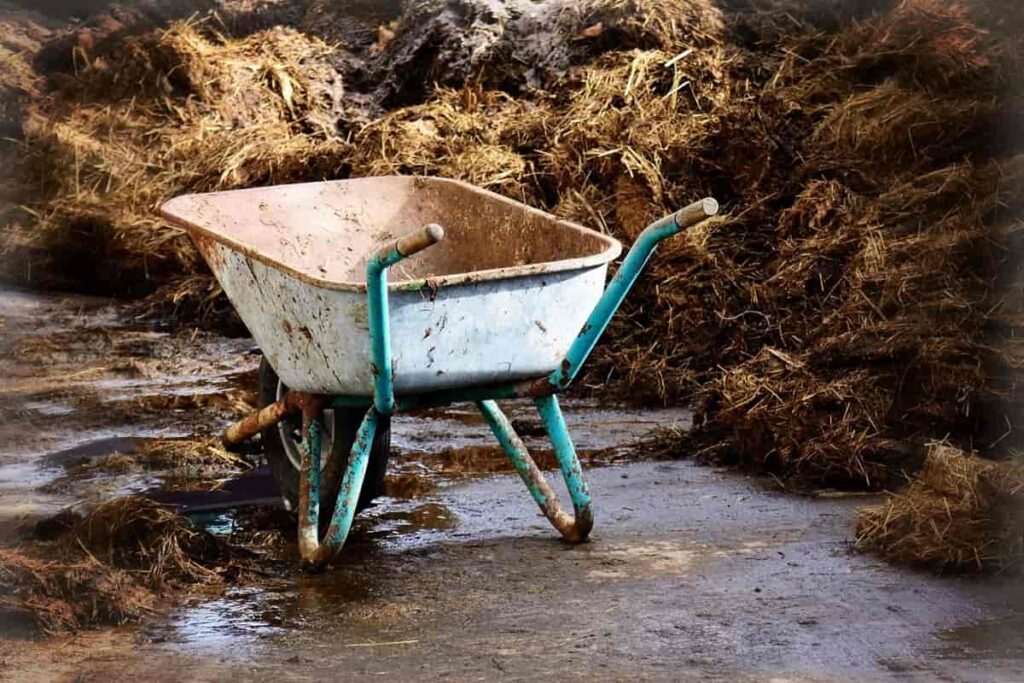
Applying method
- The fertilizer works both as a fertilizer and as an amendment, improving soil structure and promoting lush growth. You should ensure the manure is well-aged, so it doesn’t burn your plants.
- In spring, mulch established plants with a one-inch layer or work into the soil when planting.
- Steeping manure in water can also provide nutritional benefits.
Bone Meal
Generally, bone meal is granulated or powdered bones that have been cooked or smoked. A good source of phosphorus for your vegetable garden, bone meal can usually be found at your local garden/feed store, and it will help plants grow healthy roots and fruit and flower.
When to apply
In addition to promoting vigorous growth, root development, and abundant flowers, it also helps prevent fungus diseases. You can apply it in spring for a slow-release effect through the growing season and again in late autumn for root growth and flower growth the following year.
Blood Meal
Powdered animal blood, known as blood meal, is used when nitrogen is needed in large quantities. As a powder, it can be dissolved in water and sprayed. For plants with green leaves, this type of fertilizer works well.
When to apply
- As soon as you see plant growth in spring, apply a blood meal. After that, reapply every 2 to 3 months until the growing season is over.
- The amount used per 100 square feet should be between 450 and 900 grams. You should apply just 450 grams per 100 square feet until you become familiar with this product. An application of 900 grams per 100 square feet is considered heavy feeding.
- Blood meal can also be used as a side dress, but again, err on the side of using less rather than more since measurements are not precise.
- Because blood meal is not without risks, it should be used only when necessary. The presence of yellow leaves is often an indication of nitrogen deficiency. As the weak leaves cannot absorb nutrients through photosynthesis, applying a blood meal can restore health to the plant.
Worm Castings
It is simply worm manure, also known as worm casting. Earthworm manure is created when an earthworm eats its way through compost and turns into worm castings. Garden or potting soil should include worm castings since they contain nutrients.
In case you missed it: Homemade Fertilizer Recipe with Egg Shells: How and When to Apply in the Garden
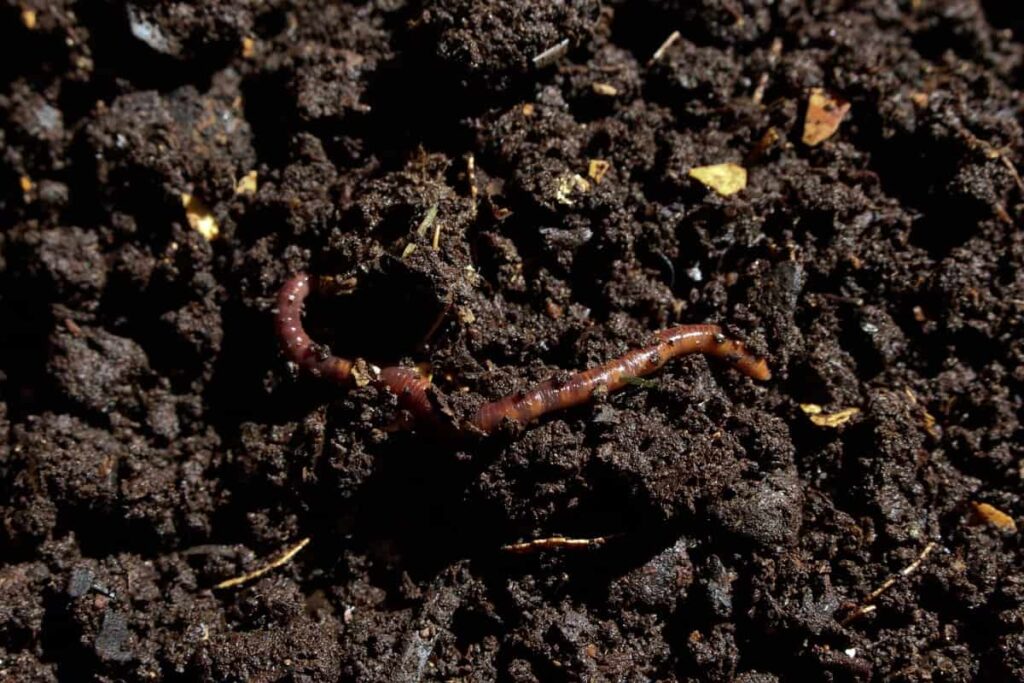
When to apply
- Use worm castings in your seed-starting soil mix: This allows you to ensure the worm castings are placed directly where the seed will be germinating and where the root zone will be developing, allowing the plant to make the absolute most of the precious black gold.
- Use worm castings when transplanting your seedlings into the garden: Mix a small handful of worm castings into the hole where you’re transplanting your seedling to promote strong root development
- Use worm castings to top dress plants 1-2 times throughout the gardening season: These highly valuable worm castings can then be complemented by 1-2 inches of organic compost laid around the base of your plants.
Guano
Guano, or bat manure, has been used to amend the soil for centuries. Insects and fruits are fed to bats, which excrete guano. You can amend the soil with it or feed your plants directly. You can find these fertilizers at your local garden center or online.
When to apply
- Plants grown in guano powder need to be thoroughly watered after being sprinkled with powder. The leaves of your plant can also be protected against fungal diseases by spraying guano tea on them.
- Before planting, you can pour it into the soil. By doing so, your garden soil will be sufficiently prepared to provide beneficial nutrients to your plants.
- During the active growing season, you can also apply guano fertilizer. Make potent guano tea and water your plants with it regularly.
Fish Emulsion
This fertilizer can give your garden an extra nitrogen boost when needed. An Emulsion of Fish and Fish Parts is a liquid fertilizer made from fish and fish parts. The liquid is diluted with water and sprayed on the soil around your vegetable plants. The most common source is a liquid concentrate, but pellets can also be found. Applied every 2-4 weeks, it will provide a continuous source of nutrition without burning the plants. Kelp is often used in conjunction with fish fertilizer.
Seaweed Fertilizer
Seaweed is a term used to describe all varieties of marine plants. These plants can be used as organic fertilizer in your vegetable garden. The liquid form of seaweed fertilizer can be sprayed on plants or used as mulch. The nutrients in seaweed fertilizer are fewer than those in other fertilizers, but it is less likely to leach into the soil than other fertilizers. You can buy it as a dried powder or as a liquid concentrate. The beneficial bacteria in soil are stimulated by kelp, which boosts immunity from pests and diseases.
In case you missed it: Easy Homemade Fertilizer Recipes: Natural and Organic for Houseplants, Flowers, and Garden Plants
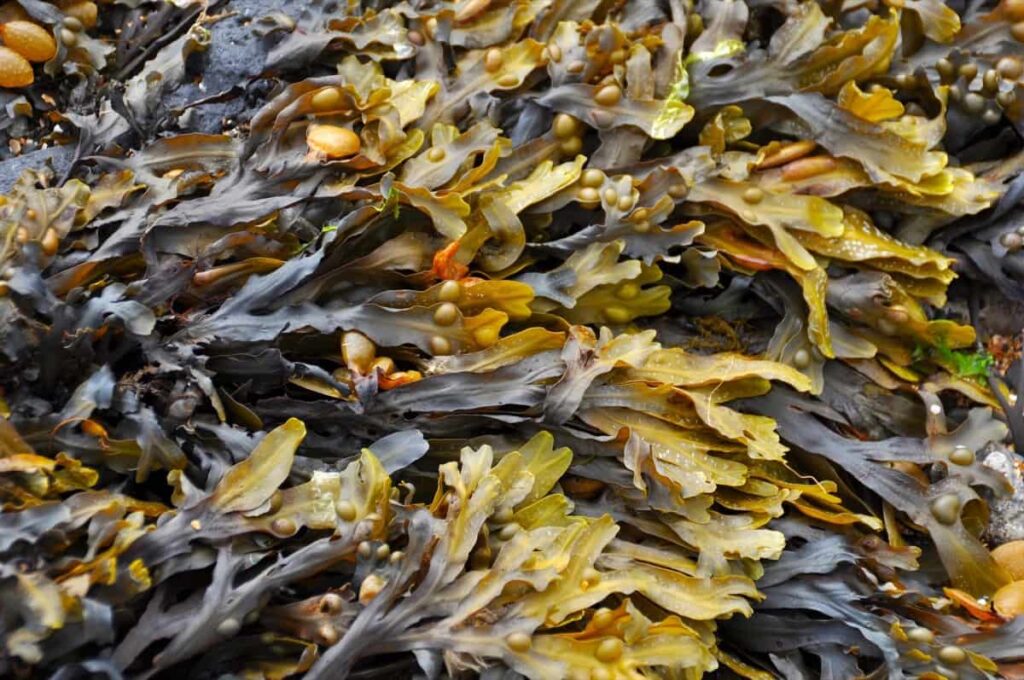
Kelp Meal
Kelp is a specific seaweed that can be used in your vegetable garden as an organic fertilizer. Kelp Meal is the result of drying the kelp collected as fertilizer and grinding it into granules. You can add Kelp Meal directly to the soil or mix it with water to create a liquid version. The use of this seaweed promotes disease-free plant growth and amends the soil.
When to apply
- The powder can be purchased as a dried powder or liquid concentrate. It stimulates beneficial soil bacteria, boosts immunity against pests and diseases, and promotes root development. During the growing season, it can be part of a regular program.
- One or two applications per year will provide a slow-release effect throughout the growing season. Lime or another alkaline source may be needed to adjust the pH of the soil since it is somewhat acidic.
Chemical fertilizers
Fertilizers are natural or synthetic, chemically derived substances containing one or more nutrients essential for plant growth and soil fertility. The most common chemical fertilizers are NPK fertilizers, which contain nitrogen (N), phosphorous (K), and potassium (K). In addition to primary nutrients, fertilizers may add secondary nutrients such as sulfur, magnesium, and calcium.
In case you missed it: High-yield Hybrid Papaya Varieties in India: How to Grow, Fertilizers, Pests, and Diseases
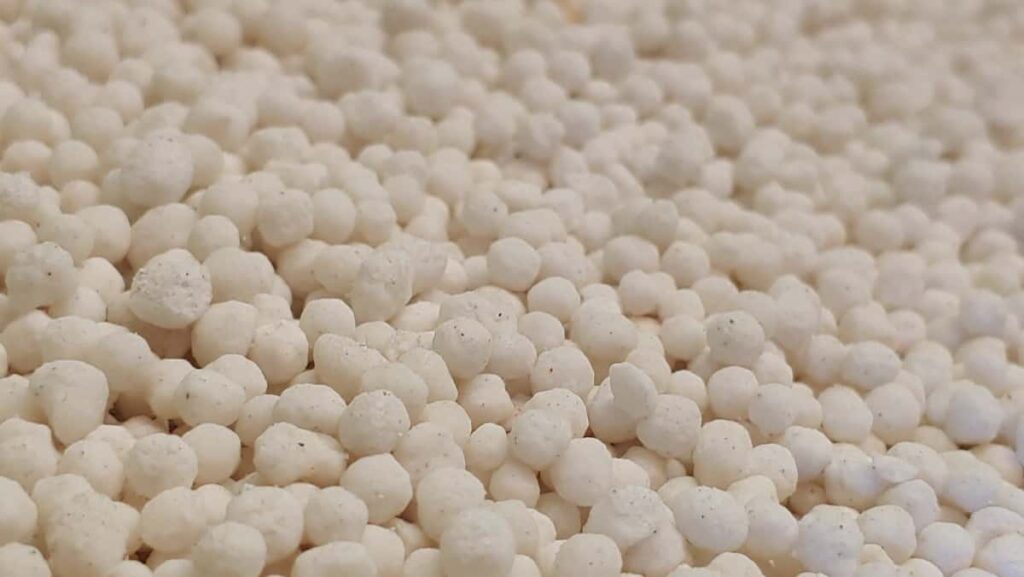
Nitrates (The leaf makers)
Nitrogen is a key component of these fertilizers. Without nitrogen, plants cannot make proteins, amino acids, and even DNA. The soil becomes nitrogen deficient when there is a nitrogen deficiency, resulting in stunted plants. They cannot make their cells. On the other hand, plants grow faster with nitrate because it promotes the formation of more and more leaves. If you are specifically adding nitrogen to your garden, choose a fertilizer with a high first number in the NPK ratio. In the NPK ratio, the first is nitrogen, and the second is phosphorus.
Common Nitrates: Ammonium sulfate, Ammonium chloride, Calcium-ammonium nitrate, Urea
Phosphates (The root makers)
These fertilizers are high in phosphorus. When plants get hungry, phosphorus is one of the main nutrients that satisfy them. It’s particularly helpful when applied in spring and summer to flower, fruit, and vegetable gardens that are about to bloom or produce fruit. And also, Phosphates encourage root formation & rapid root growth, helping plants’ overall growth. Phosphorus-only fertilizers are called superphosphates and are derived from minerals treated with acid.
Common Phosphates: Single Superphosphate, Basic slag, Rock phosphate.
Potash (The fruit makers)
There is a high potassium content in these fertilizers. In nature, potash is the third most common element and is widely available in the soil. During droughts, salt deposits are harvested from the soil. Potash in fertilizer is a salt composed of potassium nitrates, potassium sulfates, and potassium chlorides. They are used by plants, which release potassium into their crops. Fertilizers containing potash encourage plants to produce flowers and fruits. With the addition of potash, fruit production increases, with higher quality, better tasting fruits.
Common Potash: Muriate of Potash(60%), Sulphate of Potash(50%).
Mixed fertilizers
The term mixed fertilizer refers to fertilizers that contain a combination or mixture of fertilizers that promote plant growth, including fertilizers that contain pesticides as well. All three NPKs are combined in these combinations. These fertilizers give the plants a complete supply of nutrients to enhance the growth of leaves, roots, flowers, and fruits.
Common mixed fertilizers: Nitrophosphate (20:20:0), Mono Ammonium phosphate (11:18:0), Diammonium phosphate (21:54:0), Nitrophosphate with potash- Suphala (15:15:15), Sampurna (19:19:19).
When and how to fertilize
In early spring, you should apply a slow-acting granular fertilizer to your plants to jump-start their growth. There are, however, some plants that do not require any supplemental fertilizing at all, such as natives and succulents. The ability of a plant to absorb nutrients can be affected by various factors, including the type of soil, pH, moisture, drainage, and temperature, among others. As a general guideline here are some general guidelines that may vary depending on the plants within these categories.
Trees and shrubs
As far as fertilizer is concerned, most trees and shrubs need little or no additional fertilizer, depending on the health of the soil. However, granular fertilizer can be applied in the early spring. In addition, you can use a fertilizer specially formulated for trees and shrubs and apply it around the drip line.
Perennials
Most ornamental perennials will thrive in healthy soil and need little supplemental fertilizer. Plants that have been established need to be mulched with 1-2 inches of compost in early spring or fertilized once in spring with an all-purpose granular fertilizer.
Roses
As heavy feeders, roses require a regular supply of nutrients during the growing season to maintain their health. Depending on the fertilizer used, it is recommended that you reapply fertilizer every 2-6 weeks from spring until summer. It would be best to stop fertilizing your plant 6-8 weeks before your first average frost to avoid damaging the new growth.
Annuals
It is important to remember that most annuals are heavy feeders, which means they benefit from a continuous supply of nutrients throughout the summer for continuous blooming. Compost should be added to beds, or high-quality potting soil should be used for planting containers. Using an all-purpose granular fertilizer or a liquid fertilizer, such as fish emulsion, regularly, according to the instructions on the package, is recommended.
Vegetables
For the successful production of vegetables, well-amended soil and a sufficient amount of fertilizer are essential. However, it is important to know that nutritional needs differ from one crop to the next. Fertilizer is used in the spring to prepare the soil for planting edible crops, and it is mixed into the soil before planting. You can use granular fertilizer around the seedlings even if you have already sown your seeds or planted your seedlings. Remember to use granular fertilizer rather than a liquid fertilizer, which can burn the young roots.
Fruits
The nutritional needs and fertilizing schedules of strawberries, blueberries, cane berries, and fruit trees differ from region to region, depending on the climate. For more information, you may wish to contact your local extension service or garden center.
Lawns
Generally, it is recommended that you apply a high-nitrogen fertilizer specifically formulated for lawns in the spring and again in the fall. There may be some variations depending on the region. Make sure to leave grass clippings that have just been mowed as an additional nitrogen source for your lawn.
Bulbs
For spring-blooming bulbs, mix bone meal or bulb fertilizer into the planting hole according to the instructions on the package. When new growth appears in established beds, add a top dressing of a general-purpose or bulb fertilizer in the fall and early spring when new growth begins. When the soil is healthy, summer bloomers such as lilies require little supplemental fertilizer as long as the soil is well drained. Work bulb fertilizer into the soil around the plants in early spring if you wish to do so.
Success tips
- It is important to know the overall condition of your soil before applying fertilizer since too much fertilizer can be as destructive to your plants as too little fertilizer.
- To avoid foliage burn, brush the granular fertilizer off the leaves.
- Plants that require similar light, soil, and nutritional needs should be grouped to make it easier for you to care for them.
- It has been found that plants in containers need more frequent watering, which causes nutrients to leach out faster than plants in the ground. The containers should therefore be fertilized more often, every two to four weeks, as a result.
- Some fertilizers perform better in warmer temperatures, but to avoid stressing your plants, you should avoid fertilizing during periods of extreme heat.
Conclusion
Depending on the type of plants you grow, and the time of year, you need to fertilize them differently. Some garden plants are heavy feeders (those that require more nutrients than others). Plants that grow fast and bloom tend to belong to this category, which includes most annuals, fruits, vegetables, roses, and hydrangeas.
- Profitable Village Farming Business Ideas in 2024
- High-Yield Aquaculture: Fast-Growing Fish for Farming
- Effective Fish Pond Construction Techniques for Beginners
- Irrigation and Water Management in Pineapple Farming
- Blossom to Harvest: Mastering Flowering and Pollination in Papaya Farming
- Pig Fattening Essentials: From Selection to Sale for Beginners
- Raising Wagyu Cattle: A Complete Guide for Premium Beef Production
- Soil Types and Their Water Holding Capacity
- Optimizing Irrigation Schedules for Coconut Groves for Enhanced Yield
- Espresso Your Garden: Coffee Grounds for Healthier Acid-Loving Plants
- The Best Soil Mix for Snake Plants: How to Mix Your Own Snake Plant Soil
- Green Thumb Success: Expert Tips for Cultivating Greenhouse Beans All Year Round
- Bloom All Year Round: The Ultimate Guide to Indoor Hyacinth Care
- Eco-Friendly Gardening: How to Make Liquid Fertilizer from Kitchen Waste
- Ultimate Guide to Grow Anise in Pots: Explore Seed Propagation to Harvesting
- Guide to Raising Chester White Pigs: Discover Breed Facts to Growth Management
- Mastering the Elegance: The Ultimate Guide to Weeping Cherry Tree Care, Planting, and Maintenance
- Ultimate Guide to Planting Garlic in Grow Bags: Growing Strategies for Beginners
- How to Fix Spider Plant Leaf-Related Problems: Natural and Organic Remedies
- 10 Reasons Why Your Tulsi Plant is Shedding Leaves: Home Remedies and Solutions
- Optimizing Growth and Yield: The Advantages of Palm Bunch Ash Fertilizer
- Utilizing Neem Oil Extract as a Natural Pesticide for Hydrangea
- From Soil to Harvest: Various Ways in Which Farmers Can Use AI Tools
- Steps to Encourage and Induce Citrus Flowers: A Comprehensive Guide
- How to Fix Snake Plant Leaf-Related Issues: Natural and Organic Remedies
- Transform Your Garden into a Fragrant Oasis with Raat Ki Rani (Night Blooming Jasmine)
- Discover the Ideal Chicken Breeds for Philippine Farms
- How to Create a Poultry Egg Farm Business Plan for Profits
- Grow Lemon Cucumbers Like a Pro: Insider Techniques for Bountiful Yields
- Ultimate Guide to Caring for Your Pink Princess Philodendron: Tips for Thriving Variegation
- Areca Nut Profit Per Acre: Calculating Yield and Cost of Cultivation
- How Kaveri Chicken is Becoming a More Profitable Breed in Indian Backyards
- Transform Your Barn: 9 Steps to Convert a Horse Stall into a Chicken Coop
- Exploring Suffolk Sheep Disadvantages with Limitations and Challenges
- Guide to Solving Potted Lemon Tree Problems: How to Revive Lemon Tree in Containers
- Steps to Encourage Female Pumpkin Flowers: Best Strategies for More Flowers and High Yields
